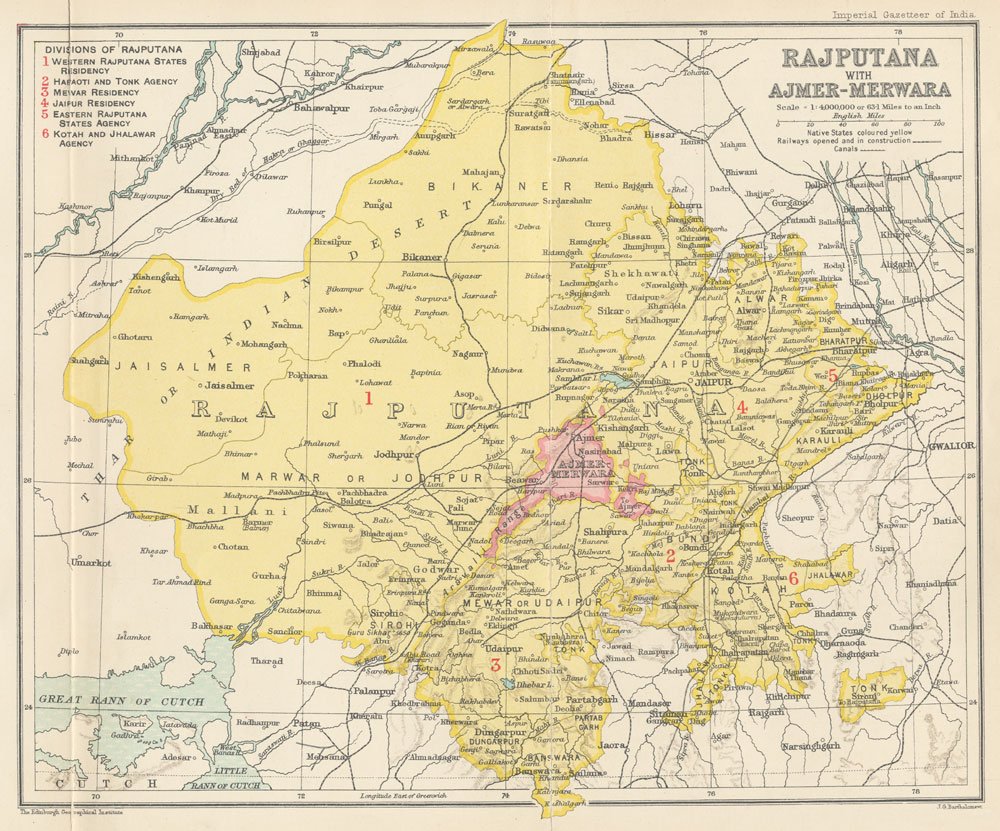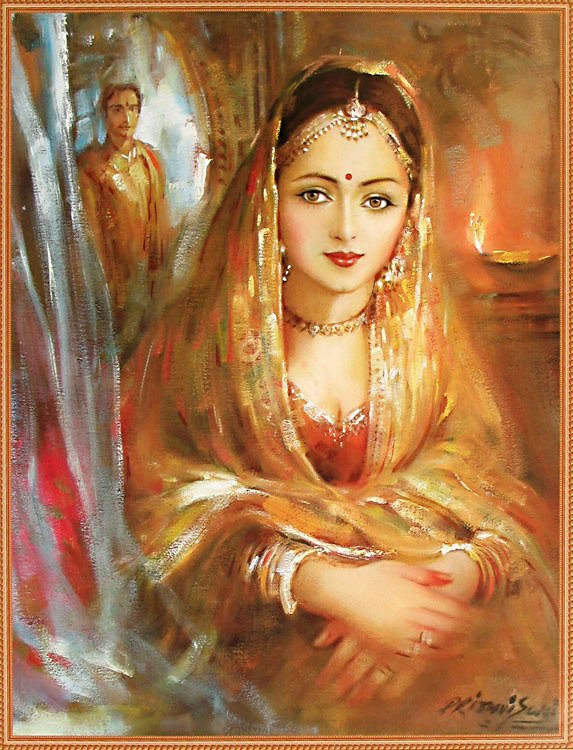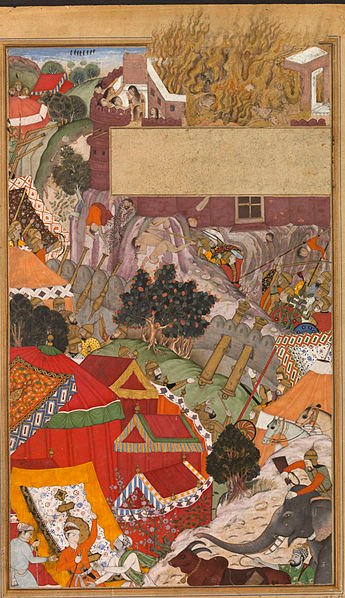Part 1: The Beginning (800 BCE to 1690 CE)
The most interesting heritage and family history stories are usually by South Asians (‘Desi’ pronounced they’si), I doubt that I have ever seen a Desi who is from “here”, and almost all Desi are direct descendants of the prophets, some are Arabs, Persians, and some even Pashtuns – everything but Desi. Few months back I started working on my own heritage and family history and started learning about the Rajputs of India, and engaged the assistance of a Swedish professor Emma Wohlart a PhD in Classical Archaeology and Heritage Education, and the General Editor of Popular Archeology Magazine.
Well for me “here” is the Indus Valley civilization, once a heavily forested area on both sides of River Indus, the river flows from the Tibetan plateau, into the north-west of India and through the entire length of Pakistan before ebbing out into the Arabian Sea.

I am a descendent of the Indo-Scythian civilization which was established around 800 BCE when the fragmented remnants of Indus Civilization (3300-1200 BCE) were overrun by the Central Asian Scythians.
The professor believes that I should plan a DNA analysis to confirm the Scythian marker (R1a1-M17), lack of which would mean Indus valley roots going as far back as 6000 BCE – giving a whole new meaning to I am from here.
Around 200 BCE a smaller more localized group of Indo-Scythians referred to as Saka established a nation called Sakistan and subsequently spread into the regions of the Gandhara, Punjab, and Rajistan.
The Saka kingdom lasted until 400 CE, when it was overrun by the Gupta Empire, a neighboring Indian empire and Malwa the capital of Saka was annexed. The Gupta era is referred to India’s golden age. Fa Xian a Chinese pilgrims who visited India in 405 CE, and stayed there till 411 CE, making careful observations and records of the time, noting the mildness of administration and the Penal Code, where offences were punished only by fines.
The Gupta Empire was defeated by a stateless wandering Saka prince Yasodharman, the legend from the two monolithic pillars in India narrate the story that Yasodharman was saved by a girl while wandering wounded in a forest. It was a message from this girl, which acted as a motivation behind his military campaign and victory.

Declaring himself King of Malwa in 528 CE, the old Saka territory, he continued to rule the region till his death, when his son Shiladitya took the throne. Shiladitya’s reign was cut short, when the neighboring Huns attacked and captured Malwa. He was injured in a campaign, and sought refuge at a temple in Arayari hills with his pregnant wife Pushpavati a Paramara princes, where she delivered a baby boy whom she named Guhil, before immolating herself in her husband’s funeral pyre.
Guhil was raised by the temple priest’s daughter and established the Kingdom of Mewar and ruled over it till 580 CE. Guhil was succeeded by his son Bhoj, who was succeeded by his son Mahendra I, and the line continued uninterrupted, in 734 CE ruler Kalbhoj (Guhil’s descendent) extended his empire and established rule over Chittor.
In 710 CE Islam reached the shores of India, when a General of the Umayyad Caliphate attacked the Sindh area, the Umayyad invasions were quite successful, which has been attributed to a peaceful treaty between Mohammed bin Qasim and the Indic Rashtrakuta Dynasty reminisce of the Gupta Empire.
The Guhilots, the decedents of Guhil, were less interested in peace. Prince Kalbhoj, also known as Bappa Rawal, united the neighboring Rajput states of Jaisalmer and Ajmer and led them into war against the Umayyad forces. Kalbhoj and his army successfully held back the advances of Muhammad bin Qasim and the Guhilot prince made a legend of himself as a formidable warrior, diverting the Arab invasions East and Southwards establishing peace in the region for almost 500 years.
These battles had established the Mewar Dynasty as regional power, paving the way for the federated princely state of Rajputana.
The empire acted as a barrier for Arab invaders from the 6th to the 11th century. Historian R. C. Majumdar notes in his works that historians have wondered at the slow progress of Muslim invaders in India, as compared with their rapid advances in Europe, Africa, and rest of the world, and credits the Rajput armies that effectively barred the progress of the Muslims beyond the confines of Sindh, their only conquest for nearly three hundred years.
In 1303, Ala ud-din Khilji the most powerful ruler of the Muslim Turkic Afghan dynasty launched a powerful and deeply remembered attack on the Mewar capital of Chittor.
The medieval sources explain that Ala ud-din had fallen in love with Rani Padmini the queen of Mewar, from the simple amorous description of her beauty.
Finding the city heavily guarded and desperate to see Empress Padmini, Ala ud-din sent word to Emperor Ratan Singh that he viewed the empress as a sister and wished to meet her in person. Ratan Singh feared losing Chittor to the Muslims, and suggested a veiled viewing; the Queen finally consented to letting Ala ud-din see her through a mirror.
This only enflamed Ala ud-din’s passion and he arrested Ratan Singh after lowering him to his camp for a peace treaty. He demanded of the people of Chittor that they give him the empress or he will be-head Ratan Singh.
The following morning, when the empress was set to arrive, hundreds of covered palanquins were carried down to the Muslim camp. To the Sultan’s surprise there were no empress and servants in the palanquins, but fully armed Mewar soldiers who freed their emperor.

Chittor was eventually lost to the Delhi Sultanate after a protracted siege, the main bastion of the Guhilots, occasioned the famous Jauhar of 1303 CE, when the men wore saffron turbans as a mark of performing saka, charging into battle to fight till last blood, and the women led by the empress collectively committed suicide by self immolation rather than risk personal dishonor at the hands of the victorious Muslim army.
The injured and surviving Guhilots along with the evacuated under age residents and royals are said to have taken refuge in the nearby hills and then in Ahir, until they relocated to Sisoda, a town built right where a prince had killed a hare (Susso).
After Chittor was lost, a distant kinsman of Ratan Singh, Lakshman Singh, proclaimed himself Ruler-in-exile. Lakshman was descended in direct lineage from Bappa Rawal, and hence belonged to the Guhilot clan.
In 1320 CE Lakshman Singh and his son Ari Singh died in a skirmish with the Muslim forces, and the Guhilots selected Laskshman Singh’s grandson Hammir Singh to lead them.
In 1326 CE Hammir Singh attacked Chittor and liberated it, he was the first to use the title Rana (meaning Ruler or King), and changed his family name to Sisodia to honor the place where he grew up.
The descendants of Hammir Singh went on to rule Mewar with a strong policy of opposition against foreign invaders.
In the early 16th century, Rana Sangar, the king of Mewar, faced repeated invasions from Muslim rulers in Delhi and the neighboring regions. He met them in battle at least eighteen times, losing an arm, an eye, and was crippled in one leg. Even so, when he captured the Muslim Sultan Mahmud of Mandu in 1519 CE he maintained Rajput chivalry and treated the Sultan as his guest, eventually restoring him to his kingdom.
In 1527 CE Rana Sangar united the Rajput states and put a valiant fight against Zahir ud-din Muhammad Babur, a general from Kabul and descendent of Genghis Khan, the Rajputs lost and the victory was a major stepping stone for Babur in establishing the Muslim Mughal Empire in India.
For decades that followed the region remained a constant battle ground, and it was Emperor Akbar (grandson of Babur) who brought most of the Rajput states under his rule by force or by dynastic marriage, but the Sisodias refused along with Bargujars, and repeatedly went to war with Akbar.
Chittor fell to Emperor Akbar in 1568 CE forcing Rana Udai Singh II to shift the capital to a more defensible and newly founded site of Udaipur. From this new fortified location the Rajputs of Mewar continued their fight against the Mughals, and the territory remained a battle ground and hub of regional conspiracies.
In 1679 CE Mughal emperor Aurangzeb (8th descendent of Babur) through the help of other Rajput tribes tried to oust the Sisodias for good.
One of the Sisodia princes Raja Gulab Singh tired of internal conspiracies of the Rajputs to gain control over Chittor and Mewar, decided to migrate along with a large group of Sisodias to the river Beas Area near Ludhiana some 800KM away from Chittor. Ludhiana was established under the Lodhi dynasty, when the people of the area wrote to the emperor in the late 15th century to rescue them from armed bandits.
It was a peaceful, mutli-cultural city, Jains, Hindus, Sikhs, and Muslim decedents of the Lodhi dynasty lived peacefully. Ludhiana had fallen in 1526 CE to the Mughals and the Lodhi’s were reduced to subjects of the Mughal court.
It was between 1679 CE and 1684 CE when Gulab Singh accepted Islam, the Mughal Governor gave him the title of Khan (meaning leader or ruler) of his now mostly Mulsim Sesodia people, and Gulab Singh became Gulab Khan.
Gulab Khan named his son Mohammed Mehr Khan, one of Mehr Khan’s children was Mohammed Massania Khan. Massania Khan was my grandfather’s mother’s great grandfather.
End of Part 1: This is work in progress and I am planning on completing the remaining part of the Heritage and Family History soon.
If you liked this article you may be interested in reading the following:


